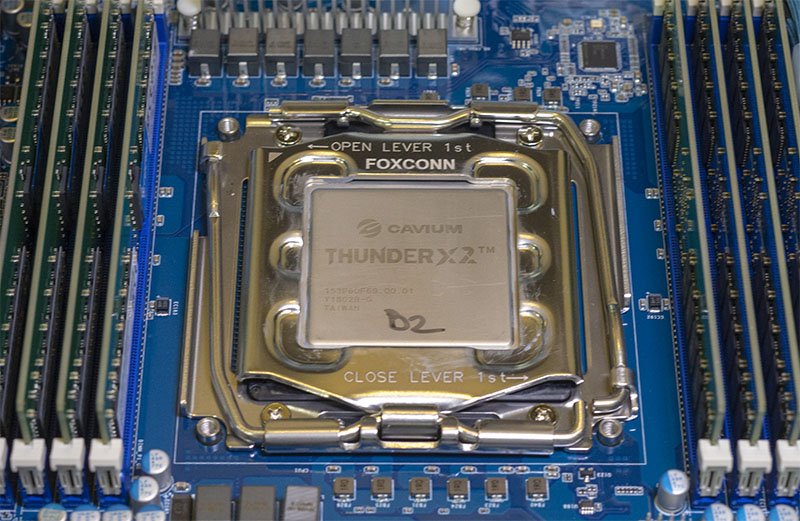It's possible to build a server from hundreds of Raspberry Pi 4s, but it's not advisable.
You Can Technically Make a Server With (Many) Raspberry Pi 4s : Read more
You Can Technically Make a Server With (Many) Raspberry Pi 4s : Read more
ThunderX2 is ARM-based!The team would rather use these single-board computers than emulate Arm processors on x86-based servers.
When I was first approached about this project, I assumed that a Raspberry Pi 4 4GB cluster was cheaper. After all, the boards are $55 each. That is three digits smaller than a server.
Interesting links, but I don't see how that's simpler than the ThunderX2. The problem they were trying to solve by using Pi's wasn't simplicity, it was cost.Actually there is a simpler solution with Socionext's SynQuacer SC2A11 24 core ARM CPU. There are several products using this chip such as 96boards Developerbox, plus upcoming V-Raptor and Banana Pi 24-Core Arm Server. Can find benchmarks over here.
Talking about costs, that does not include those numerous switches (to support at least 190 boards), power supplies (again to support that many boards) and custom wiring plus casing. Of course that ARM Cortex-A53 is slower, however in most server applications typically it is the number of cores that matters more (unless the server application specifically requires strong single thread performance).Interesting links, but I don't see how that's simpler than the ThunderX2. The problem they were trying to solve by using Pi's wasn't simplicity, it was cost.
The ThunderX2 supports dual-CPU, with each CPU having up to 32 out-of-order cores and 128 threads. Compared to that, the Socionext CPU you linked has in-order A53 cores, which should each be less than half as fast as the ThunderX2 cores.
https://www.anandtech.com/show/12694/assessing-cavium-thunderx2-arm-server-reality
Actually way less complicated than using Raspberry Pis, and don't need special casing, miles of wiring to hook up every board (for both power and networking) nor lots of network switches. With that Socionext solution, just a few dozen units (with one dozen units is already 288 cores total) and just a single or more network switches. Best of all can simply place on racks without need for custom casing and wiring.So, if a ThunderX2 server is what you really need, then the Socionext solution will require multiple chassis and the overhead + complexity needed to support them. That is not simpler.
The original STH article goes through all the costs and relative performance, in detail.Talking about costs, that does not include those numerous switches (to support at least 190 boards), power supplies (again to support that many boards) and custom wiring plus casing. Of course that ARM Cortex-A53 is slower, however in most server applications typically it is the number of cores that matters more (unless the server application specifically requires strong single thread performance).

Not only does it costs more, but the hours spent into assembling and setting up the whole cluster as well..The original STH article goes through all the costs and relative performance, in detail.
I just noticed the link included in the Mott's piece was to the 3rd and final page of that article. Here's the first page:

AoA Analysis Marvell ThunderX2 Equals 190 Raspberry Pi 4
We look at Arm-on-Arm (AoA) performance to see how many Raspberry Pi 4 4GB nodes one Marvell ThunderX2 64 core and 256 thread server replaces and the costwww.servethehome.com

